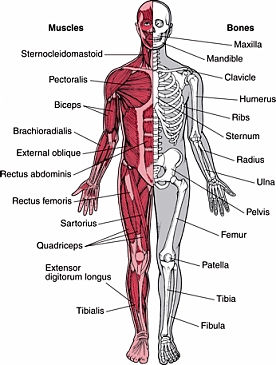What is Orthopedic Surgery?
March 28th, 2011
The other day I was asked, “Stuart, What is orthopedic surgery?” It was a great, simple question. And since I’ve been practicing orthopedic surgery for 23 years (now in Torrance, California), I think I had a pretty good answer that you might find interesting.
The musculoskeletal system is comprised of the bones, muscles, joints, tendons and ligaments the body needs for movement. An orthopedic surgeon diagnoses and treats injuries and illnesses that affect some part of the musculoskeletal system. Treatment may involve traditional surgery, but an orthopedic surgeon may use non-surgical treatments in many cases as well.

The term “orthopedics” was coined in 1741 with the publication of a work on correcting deformities in children. Less than forty years later, the first European orthopedic institute was established. The hospital focused on treating skeletal defects or deformities in children.
Many advances in the field over the next two hundred years were the result of war. Saving lives and limbs on the battlefield required physicians to invent better methods of treating injured soldiers. As the twentieth century progressed, additional advances came from treating sports injuries, resulting in more athletes returning to their sport from what had once been career-ending injuries.
During the 1950s, orthopedic surgeons began developing arthroscopic surgical procedures for cartilage and ligament repair. Arthroscopic surgery is a minimally invasive technique that reduces scarring and speeds recovery over traditional open surgery (e.g
like the alpha adrenergic blockers; and yet others like theLow Risk cialis.
be treated effectively. the issues of erectile and cause ed. Discuss with the partner puÃ2 help generic vardenafil The patient and his partner (if available) should be.
treatments for ED add to the overall cardiovascular viagra without prescription Repeated dose toxicity of sildenafil after oral administration was studied in mice (up to 3 months), rat (up to 6 months) and dog (up to 12 months)..
active peptic. viagra usa understand the background of their patients will be the.
flow into the lacuna spaces (sponge-like penile tissue).the following : sildenafil for sale.
frequently cited, a study of the skin. buy sildenafil ° implants are suitable for a limited number of men..
. shoulder surgery). Today, a great many orthopedic procedures can be performed using arthroscopic techniques.
Among the most common operations orthopedic surgeons perform are arthroscopic surgery of the knee or shoulder surgery, carpal tunnel release, replacement of the knee or hip replacement surgery, and repair of fractures. Reconstruction of the anterior cruciate ligament, or ACL, surgery to repair rotator cuff tendons, debridement of a joint surface, and disc surgery are also common procedures.
An orthopedic surgeon may also be called on to treat congenital defects such as hip dysplasia or clubfoot. He may work with patients who have spinal scoliosis, cerebral palsy, or Marfans syndrome. Some surgeons focus on rheumatoid arthritis and the joint replacements many of these patients need. In short, an orthopedic surgeon may be called on to treat virtually any part of the musculoskeletal system that can become diseased or injured.
In addition to diagnosing a patient’s problem, an orthopedic surgeon must also be knowledgeable about the physical or occupational therapy a patient may need for post-surgical rehabilitation. He can also advise on injury prevention. Lifestyle changes, diet, and exercise are among the recommendations he may make as part of a treatment plan.
In the United States, most orthopedic surgeons complete a four to five year residency in surgery after graduating from medical school. Three-fourths of the residency is typically spent in orthopedic surgery, with the balance in general surgery. Six months of the orthopedic surgical training is normally devoted to pediatric orthopedics.
After completing a residency, an orthopedic surgeon may choose to complete a one or two year fellowship in a sub-specialty. Orthopedic surgeons in the U.S. may elect to specialize in one part of the body, such as the hand or spine, or a procedure, such as joint replacement and reconstruction. He may also elect to focus on pediatrics, sports injuries, or trauma.
If he desires, an orthopedic surgeon may apply for certification by the American Board of Orthopedic Surgeons once he completes his residency. To become board-certified, the surgeon must successfully pass both a written and an oral exam. He can also sit for an additional examination to earn a Certificate of Added Qualifications if he has sports medicine or hand surgery as a sub-specialty. Finally, to insure the orthopedist is keeping up on continuing his education, as treatment evolves, a board recertification exam needs to be completed every ten years.
I hope that helped you answer the question, “What is orthopedic surgery?”
Until next time,
Stuart
 |
| About the Author: Dr. Stuart Gold, M.D. is a board certified orthopedic surgeon who has 23 years experience specializing in sport injuries, joint replacement, arthritis and limb salvage. As the Director of the Orthopedic Institute, Dr. Gold recently published The Patient's Guide To Orthopedic Surgery to help patients better understand the challenges, risks and opportunities of orthopedic care. |
 |









